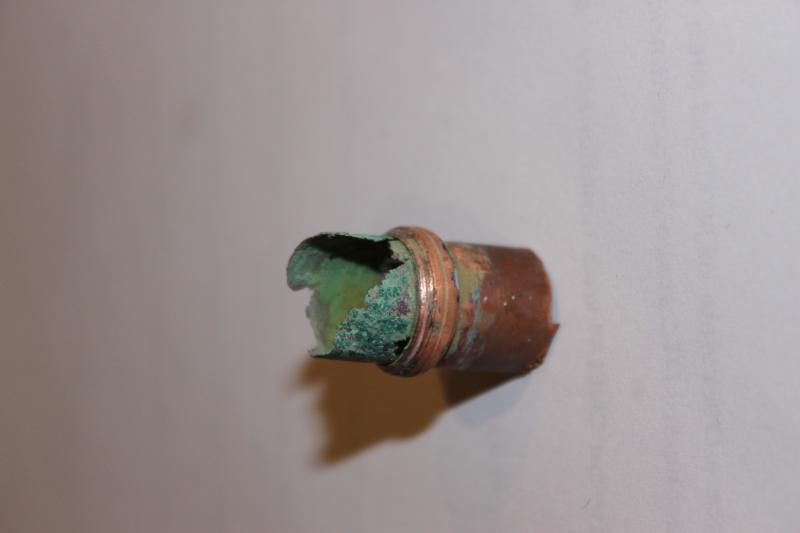Today our incoming water main sprung a leak, fortunately discovered quite quickly and fortunaterly just to the house side of the service valve. When I disassembled the leaking compression joint, I found the copper inside the fitting to be corroded away, and more corrosion just outside which had led to a pinhole. See image.
I have read some of the posts on this topic, but am still wondering what might be causing this corrosion. Is it possible to tell from the image? Some additional info, which might be relevant based on the posts I read:
(1) The pipe itself is quite old, at least 1980's or earlier. Might go back to build date 1953.
(2) The house used to have a zinc cold water tank - taken out before we moved in, 1984.
(3) This part of the pipework is not bonded - there's a water softener with plastic pipework between the main and the rest of the house.
(4) We do see a bit of green staining on the WC's and bath; but quite slight.
I fixed the leak by replacing an inch or so of pipe - but should I be thinking about replacing more of the pipework - and if so how do I decide how much to replace?
Thanks!
(1) The pipe itself is quite old, at least 1980's or earlier. Might go back to build date 1953.
(2) The house used to have a zinc cold water tank - taken out before we moved in, 1984.
(3) This part of the pipework is not bonded - there's a water softener with plastic pipework between the main and the rest of the house.
(4) We do see a bit of green staining on the WC's and bath; but quite slight.
I fixed the leak by replacing an inch or so of pipe - but should I be thinking about replacing more of the pipework - and if so how do I decide how much to replace?
Thanks!




